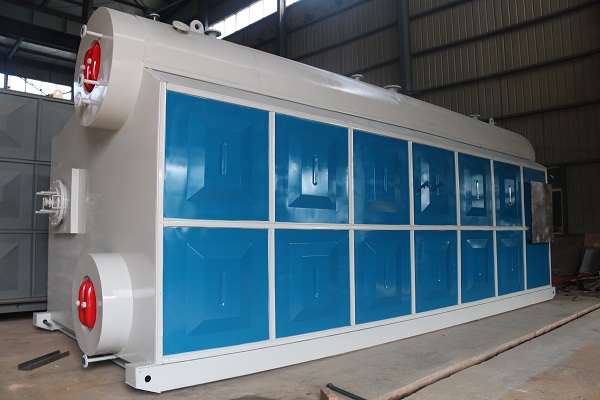Guide: The fuel of industrial oil-fired boilers is heavy oil, light diesel, etc. The boiler needs to be equipped with oil storage tanks to store the fuel. What is the appropriate safety distance between the boiler and the oil storage tank? The oil-fired boiler is equipped with a daily fuel tank. What is the function of the fuel tank and why should it be configured?
The fuel of industrial oil-fired boilers is heavy oil, light diesel, etc. The boiler needs to be equipped with oil storage tanks to store the fuel. What is the appropriate safety distance between the boiler and the oil storage tank? The oil-fired boiler is equipped with a daily fuel tank. What is the function of the fuel tank and why should it be configured?
1. The safe distance between oil-fired boiler and boiler oil tank
Relevant requirements stipulate the fire resistance rating of Class C and Class D workshops: Class I and Class II safety distances are 10m; Class III safety distances are 12m.
1. The total capacity of the fuel tank in the oil-fired boiler room should not exceed 5 m3 for heavy fuel and 1m3 for light diesel. The indoor fuel tank should be installed in a separate room. When the total evaporation capacity of the boiler room is greater than or equal to 30t/h, or the total thermal power is greater than 21MW, the indoor oil tank should adopt an automatic control device for continuous oil intake. When a fire accident occurs in the boiler room, the indoor oil tank should automatically stop the oil intake.
2. The total capacity of the intermediate oil tank installed outside the boiler room should not exceed the calculated boiler oil consumption for 1d in the boiler room. Users should pay special attention.
3. The indoor fuel tank adopts a closed fuel tank. The fuel tank should be equipped with a vent pipe that leads directly to the outside, and the vent pipe should be equipped with a flame arrestor and rain protection facilities. Glass-type oil level gauges should not be used on the fuel tank.

2. Reasons for the installation of daily fuel tanks in the boiler oil pump room
There are impurities and water in the fuel oil, and the daily fuel tank can play a role in precipitating and filtering the boiler fuel. The standard fuel pump of the fuel boiler is not very large and cannot suck oil from far away.
1. The maximum daily diesel tank is 1m³, and the heavy fuel tank seems to be up to 5³.
2. Do not use plastic tube level gauge, generally use magnetic flap level gauge (generally diesel uses side-mounted type, heavy oil top-mounted type).
3. Generally a separate room is separated from the boiler.
4. Install a fire-resistant breathable cap and connect it to an outdoor safe place.
5. Sewage overflow, etc. can be connected to the accident tank.
6. Good grounding, etc. In addition, if the fuel tank is designed, the installation of the fuel inlet pipe is also considered, so that the fuel enters the fuel tank along the inner wall and reduces the possibility of static electricity.
The safety distance between the oil-fired boiler and the oil tank and the purpose of the boiler’s daily fuel tank are described above. When using an oil-fired boiler, the actual operating cost of the boiler should be considered, and the type of fuel oil should be reasonably selected. Now that domestic environmental protection requirements are strict, oil-fired boilers must take energy-saving measures to ensure that they meet national environmental protection requirements and guarantee their own rights and interests.




























